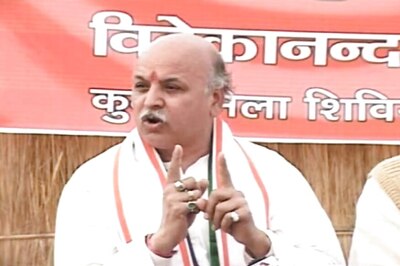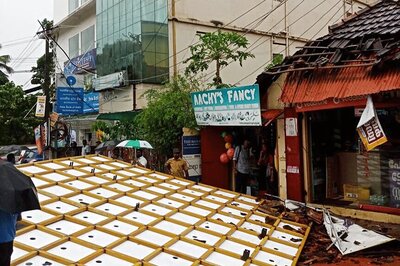
views
The newbie in the two-wheeler electric vehicle sector, Ola Electric, which has been witnessing criticism from some customers on social media along with satisfactory notes from other users of its scooter, seems to be focusing on its major future plans that include a battery plant.
As part of its bigger electrification effort, the Softbank Group-backed Indian company reportedly wants to develop a battery cell manufacturing plant in India with a capacity of up to 50 gigawatt-hours (GWh). It was also claimed that the initial aim is to build up 1GWh of battery capacity by 2023 and extend it to 20GWh over the next 3 to 4 years—this alone will require an expenditure of up to $1 billion. Currently, Ola imports battery cells from South Korea.
However, the Bengaluru-based company aims to invest in firms with sophisticated cell and battery technology, as well as establish a battery research and development facility in India. According to Varun Dubey, chief marketing officer at Ola Electric, battery and cell research and manufacturing is an important area to aim at and the company’s plans are already in an advanced stage.
In the case of battery cell manufacturing, some Asian companies like China’s Contemporary Amperex Technology (CATL) which manufactures batteries for Tesla cars, South Korean giant LG Energy Solutions and Japan’s Panasonic, dominate the section.
Additionally, recalls of the batteries from some of the world’s largest manufacturers have demonstrated how difficult it is to manufacture them on a wide scale, let alone set up a highly complicated supply chain with both corporate and geopolitical dangers.
India wants companies to manufacture clean fuel vehicles and batteries in the nation to minimize pollution, as well as reduce the government’s oil import cost. The government intends to provide up to $6 billion in incentives for this and Ola is one of the companies that has submitted a bid. Other companies like Reliance Industries, Hyundai Global Motors, Larsen & Toubro, Exide and Mahindra & Mahindra also have submitted bids under a $2.4 billion battery scheme.
As reported earlier, the Bengaluru-based automotive company, Ola Electric also said that under the government’s production-linked incentive (PLI) scheme for the automobile sector, it has committed to a total investment of Rs 3500 crore over five years.
Ola’s ambitious electrification plan faced some difficulties due to production and delivery delays, senior management departures, as well as product criticism from some Twitter users.
The battery plans come while the firm has yet to reach a significant level of scooter production. Ola’s CEO stated on social media that the company presently produces roughly 1,000 scooters each day, with a goal of two million in the first phase.
However, Ola Electric also has a Futurefactory in Krishnagiri, Tamil Nadu. This according to the company will be the world’s largest, most sustainable and most advanced two-wheeler facility.
Additionally, in January this year, Ola CEO Bhavish Aggarwal shared a photo of an electric car on social media that appeared as an EV concept by the company. While sharing the post Aggarwal also wrote “Can you guys keep a secret?—which immediately attracted netizens and triggered speculations regarding Ola Electric’s future plans.
Meanwhile, some reports claimed that the concept car would be built in a new FutureFactory, dedicated for four-wheelers and may launch in 2023. But Ola Electric has not made any official remark on this matter so far.
However, Aggarwal has advocated for the phase-out of gasoline-powered two-wheelers by 2025. But readiness has been a concern. Some consumers are still worried about the lack of infrastructure — not enough charging stations.
Regarding this, Ola Electric, the manufacturer of S1 and S1 Pro, has said on its website that “Ola Hypercharger Network is expanding blazingly fast. Our mission is to build enough charging stations to prove virtually unlimited range.”
The company also noted that “let us know if we are not around where you are and we will do our best to set up a charging station on priority”.
Separately, in terms of future plans, earlier this year it was also reported that over the following few years, Ola Electric has made plans to invest $100 million in establishing a new advanced engineering and vehicle design centre in the United Kingdom—’Futurefoundry’ centre. It will be headquartered in Coventry, where corporations such as Jaguar and Aston Martin have established their plants.
Over 200 designers and automotive engineers will work at Ola Futurefoundry. The facility will also engage in technological research and development with UK education and research organisations.
Read all the Latest Auto News and Breaking News here




















Comments
0 comment